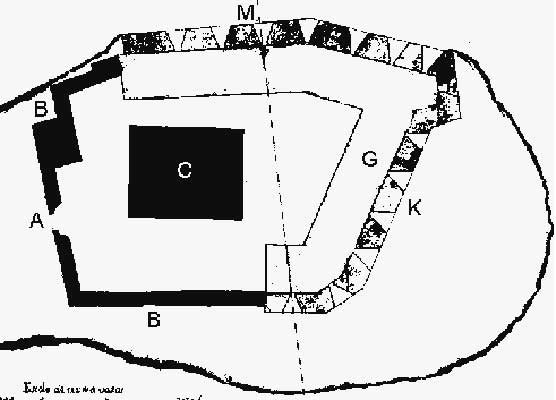
NPS photo In order to defend the Spanish colony against hostile vessels, Spain began construction of a fortification to protect the Bay of San Francisco, at its narrow entrance in 1793. Located on La Punta de Cantil Blanco, or the point where white bluffs overlook the two-mile wide Golden Gate Strait, a brick-covered adobe with 15 embrasures was completed in December of 1794 and named the Castillo de San Joaquin. Later that year, reacting to the fear of a British incursion into Spanish territory, the Spanish royal frigate Aranzazu delivered six bronze guns to the Castillo. Far from being a bastion of Spanish control over the region, the Castillo was only intermittently manned, usually by soldiers from the nearby Presidio. A lack of adequate upkeep at the Presidio soon became a problem. In spite of reconstruction attempts, the Castillo's adobe structures quickly deteriorated from rain, shifting sand substrate, and lack of adequate upkeep.1 When the U.S. military began building Fort Point, the cliffs on which the Castillo de San Joaquin stood were leveled. As a result, nothing remains of the Spanish outpost today; however, a few relics survived the destruction of the Castillo, including a collection of several cannons used to defend it. These cannon were cast in Peru more than a century earlier. They are among the oldest cannon in the United States and are currently on display at the Presidio of San Francisco. 
A: Gate to the battery; B: Main walls of adobe, C: Guardhouse; G: Wooden esplanade; K: Battery embrasures constructed on sand; M: Battery embrasures constructed on rock and sand (modified from an plans drawn by Spanish army engineer Alberto de Cordova, July 20, 1796). NPS image 1. Langelier, John and Rosen, Daniel. Presidio of San Francisco: Golden Gate. California: United States Dept. of the Interior, 1992. |
Last updated: February 28, 2015
